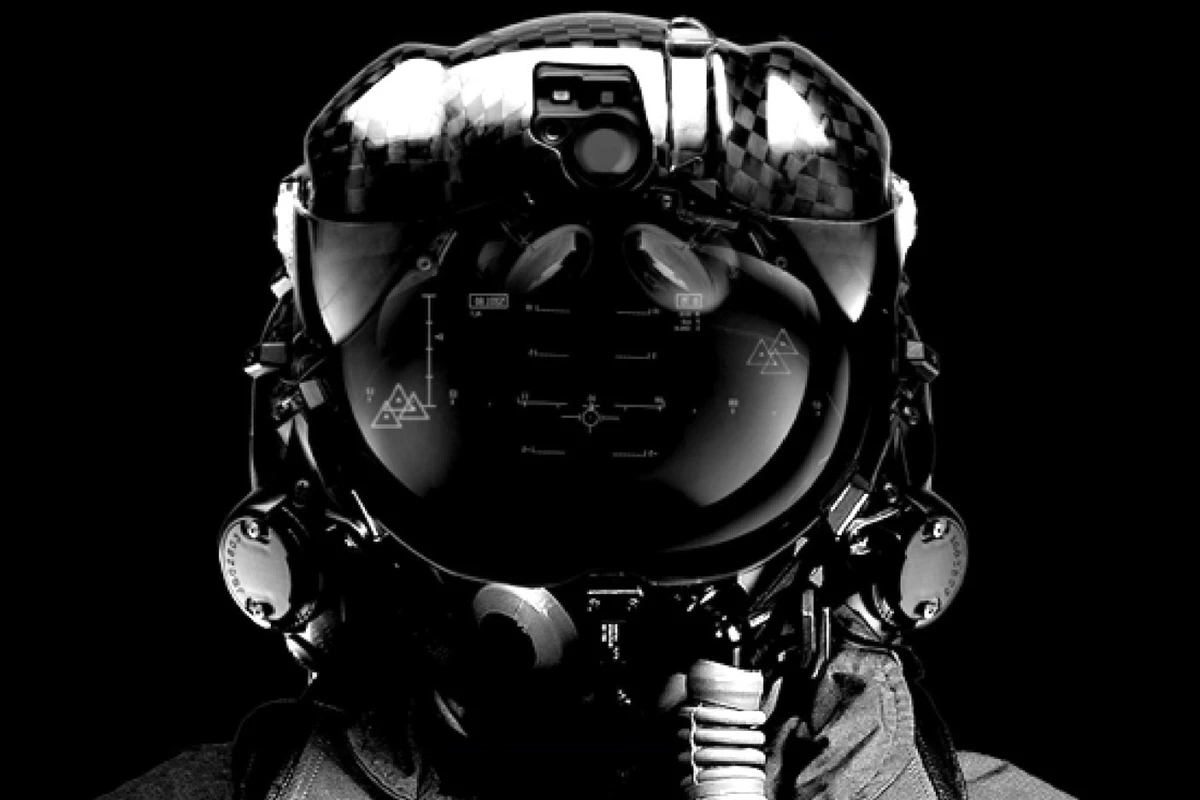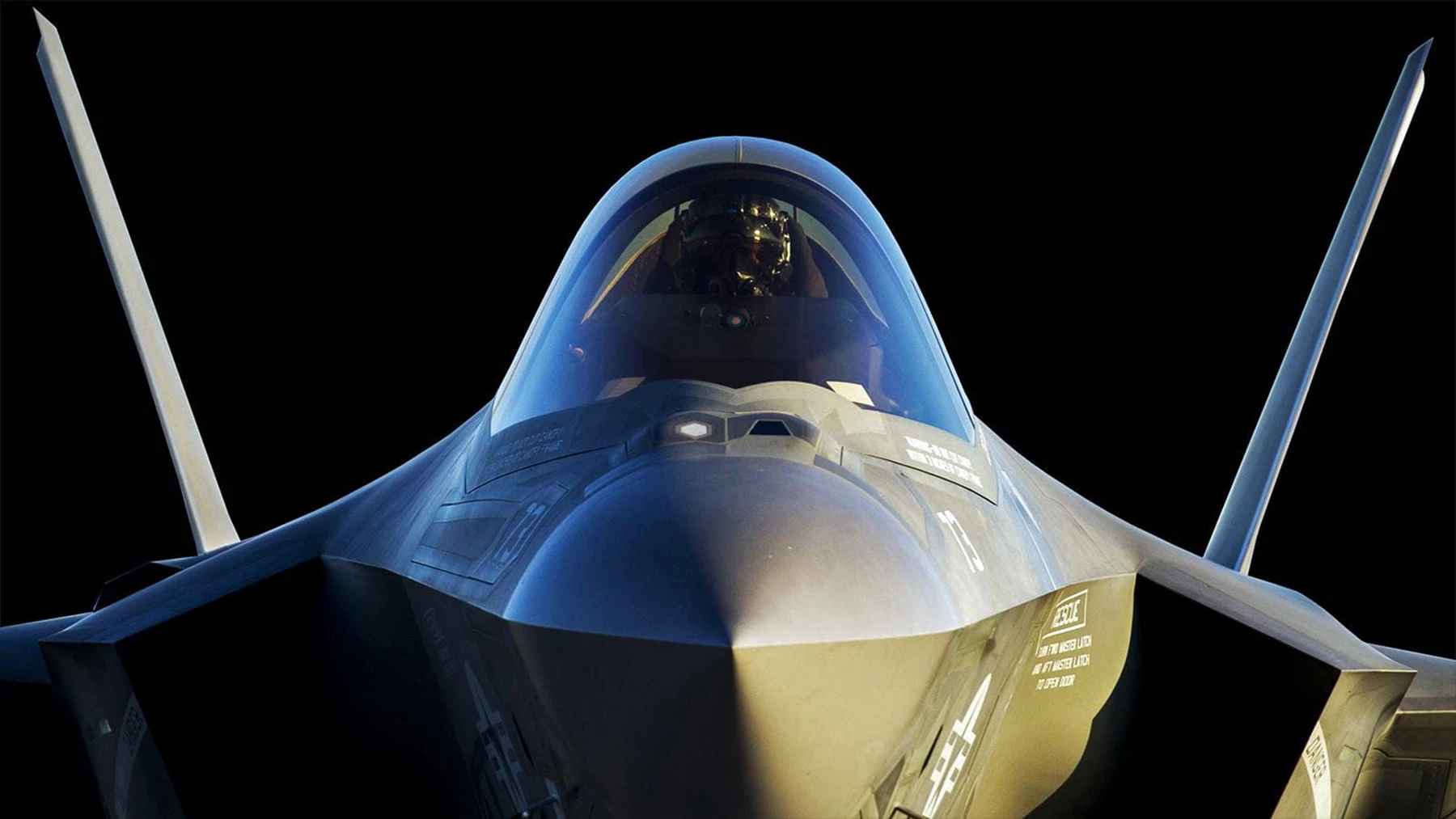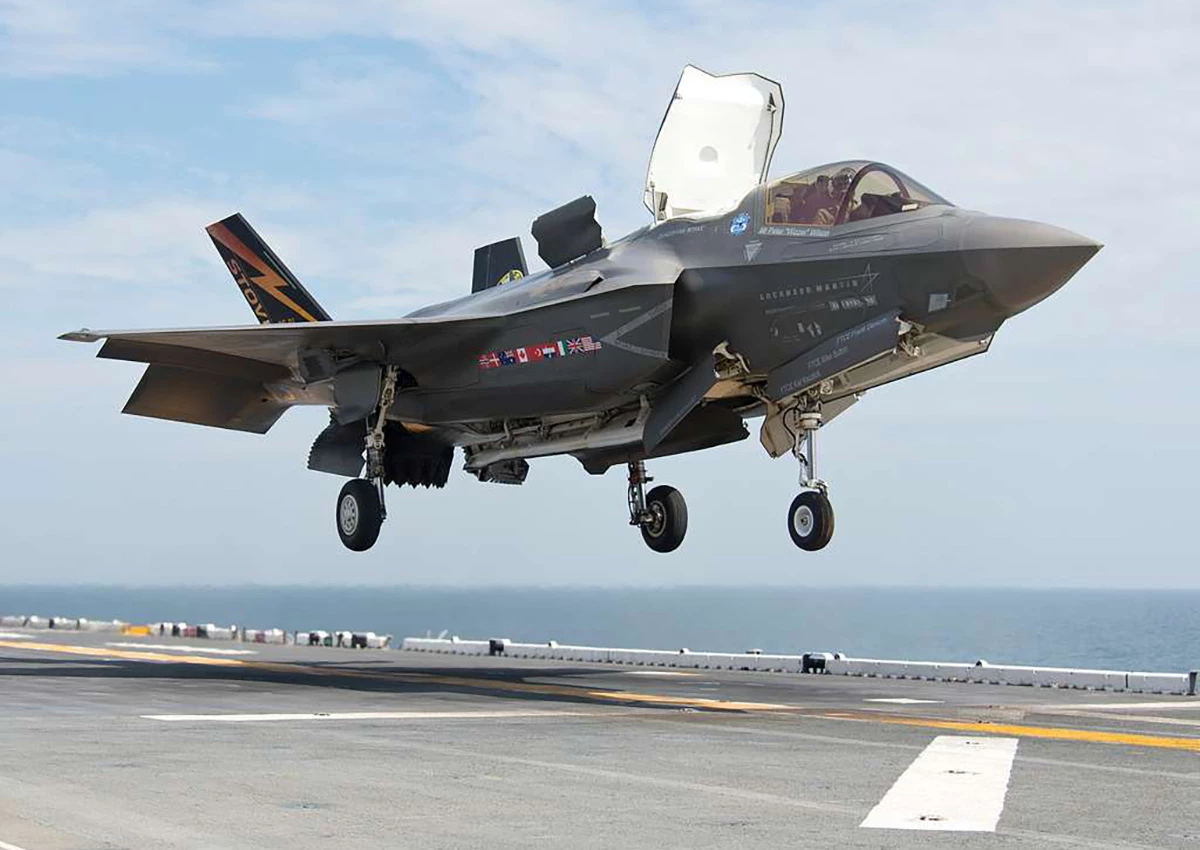Roughly $1.7 trillion dollars has been invested in the 5th generation multi-role F-35 program. Technologically, it's the most advanced fighter plane on the planet, boasting stealth technology to avoid detection along with radar jamming capabilities and the ability to reach speeds over Mach 1.6 (1,200 mph).
It can carry over 18,000 lbs of internally hidden weapons payload. It has nearly every sensor type you can think of: Active Electronically Scanned Arrays (AESA) radar, Distributed Aperture System (DAS), Electro Optical Targeting System (EOTS) and a Helmet Mounted Display System (HMDS).
One of the three F-35 variants even has the ability to take off and land vertically (VTOL) – or simply hover in the air – with a push of a button.
To make all of this work cohesively, the standard "top gun" F-16 style helmet we're all familiar with had to be updated. Gone is the traditional green Heads-Up Display (HUD) that you remember seeing on the dash of every cockpit in every 90's fighter plane movie. For pinpoint VTOL operations and total situational awareness in combat, the F-35 required a helmet that can make the entire plane disappear, for unobstructed vision in any direction.
It took a decade of development, but Collins Aerospace made it happen with the Genesis III, or "Gen 3" HMDS – at the mere price of $400,000 a pop.
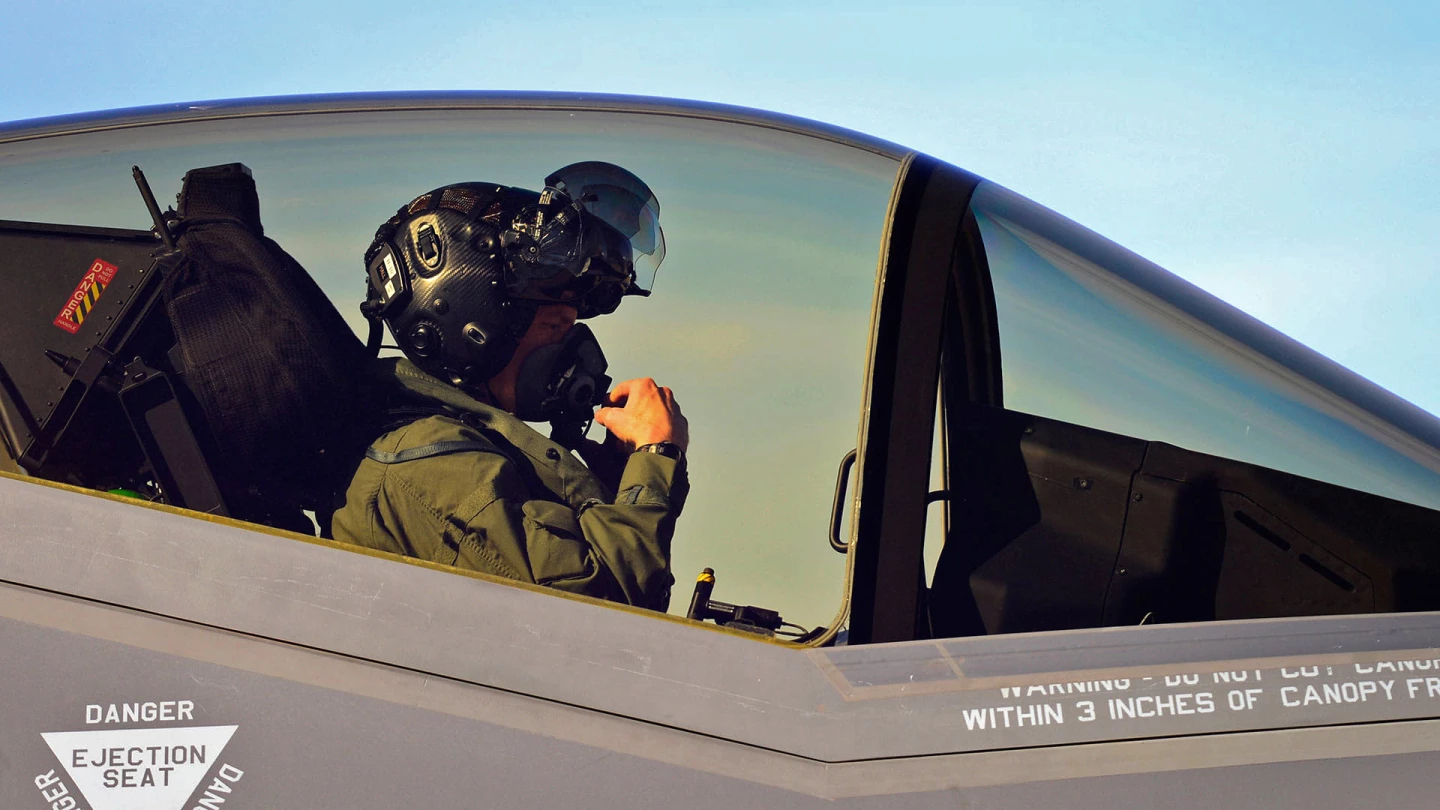
That's enough to buy a modest condo in Miami Beach, Florida or about as much as sending both your kids to get a 4-year degree from Harvard.
But you do get your money's worth; the Gen 3 HMDS serves as the pilot's primary display as well as the weapons control system. The F-35 Lightning II has 6 cameras mounted to the exterior of the aircraft pointed in every direction, and the visor on the Gen 3 HMDS shows a stitched-together composite of all these camera views, allowing the pilot a full 360-degree, completely unobstructed view, simply by turning their head. If you look down where your flight stick is, you'll see right through yourself and the plane, all the way to the ground.
On top of this, the HMDS provides a continuous display of flight information and sensor data, translating everything into a useful Augmented Reality (AR) overlay while also providing input back to the F-35 – which is basically a flying supercomputer.
Pilots can mark and track "friendlies" or enemy air and ground units by simply looking at them with the Genesis 3 HMDS targeting system.
Night time? No problem. The Gen 3 HMDS has built-in night-vision with a 30-by-40-degree field-of-view and 100% overlap, eliminating the need to have separate night-vision goggles. Infrared cameras on the fuselage allow the pilot to see even in complete darkness.
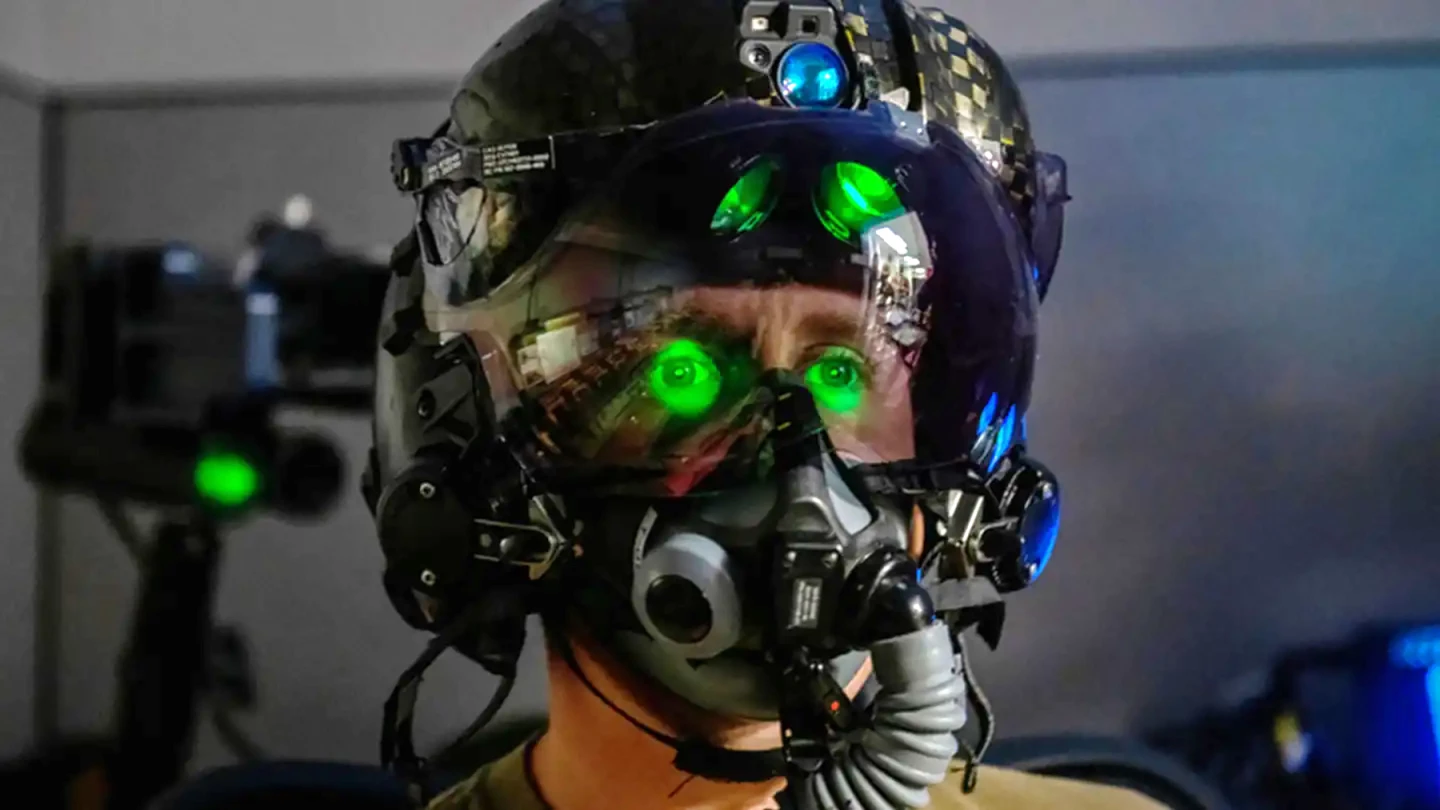
The helmet is capable of a pilot ejection at 550 KEAS. That's 633 miles per hour (1,018 kph) for us mere mortals.
To make all of this work, every Gen 3 HMDS foam helmet liner is custom-designed and laser cut for the user. Reservists in the 419th Operations Support Squadron measure and 3D-scan every pilot's noggin to create a perfect and precise fit of the liner to go into the carbon fiber outer shell.
The pilot's pupillary distance is precisely measured to ensure only a single image is seen on the visor. Also measured is the eye-to-visor distance to keep everything in perfect focus.
The fitment process is so incredibly detailed, that even getting a new hairstyle or eating too many cupcakes would mean your helmet would no longer fit properly. Every 120 days, the helmet undergoes a fit-check to ensure it's functioning properly and up to standards.
That's a lot of technology stuffed into about a 5 lbs (2.3 kg) package. For comparison, a high-end motorcycle helmet usually weighs around 3.3 lbs (1.5 kg). However, it's all completely necessary to make pilot and machine function as one.
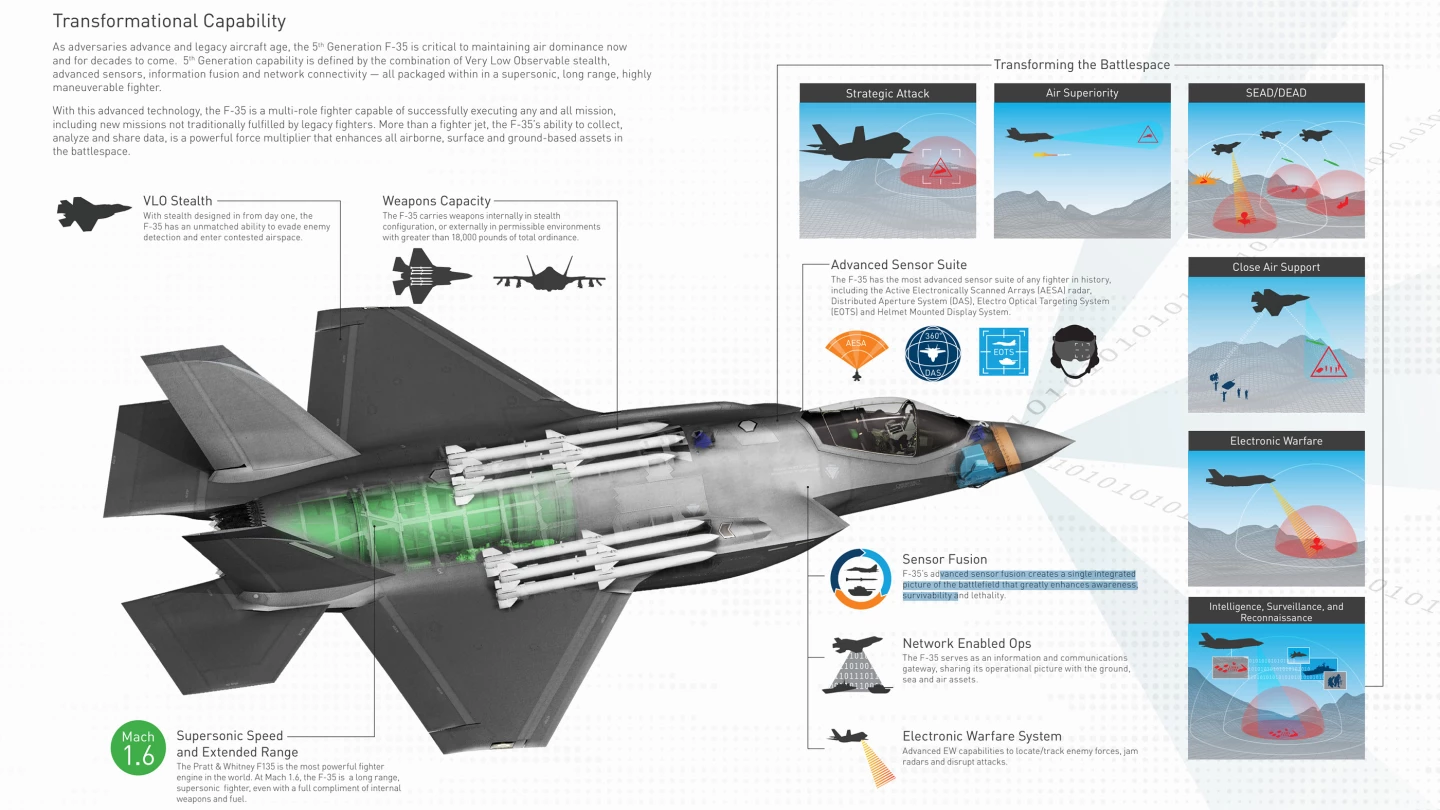
Does it come with a custom squeegee if the pilot has to sneeze?
Here's an excellent overview from Sam Eckholm of the F-35A Lightning II with info on the pilot's loadout, including the Gen 3 HMDS helmet. Skip to 9:09 if you want to just see the helmet.
Source: Collins Aerospace
